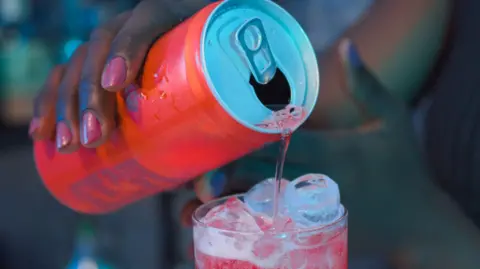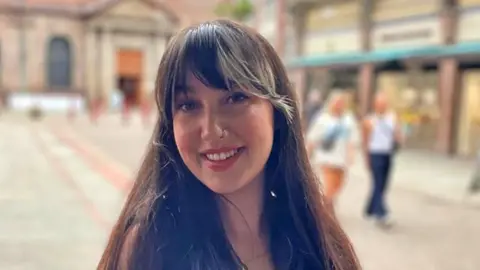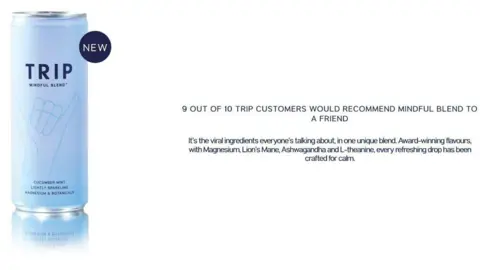Inside the Glorya Kaufman wellness hub at the Wende Museum of the Cold War
We whine and purr and howl, a collective release.
About 20 of us are huddled in a patch of shade, beneath a cluster of palm trees, in a sleepy Culver City garden. Paired up, we face our partners, cup our hands behind our ears and let out loud, primal noises. And we laugh.
We’re participating in a “tuning exercise” led by the performing arts group Cantilever Collective. It’s part of a movement workshop meant to facilitate connection between individuals and help regulate our central nervous systems so as to release stress and promote a sense of overall well-being.
-
Share via
Where are we, exactly? At one of Los Angeles’ newest and most robust wellness hubs — held, perhaps counterintuitively, inside the Wende Museum of the Cold War. The Culver City museum, which opened its doors in 2017, debuted its Glorya Kaufman Community Center last weekend, a 7,500-square-foot space for cultural programming and wellness activities. The three-story, modernist concrete building, which sits across the sculpture garden from the museum’s exhibition hall, was made possible with funding from the late philanthropist Glorya Kaufman, who passed away in August. Her foundation provided the lead gift toward the $17-million new building and committed $6 million toward programming.
The new community center includes a 150-seat theater inside a refurbished, century-old A-frame structure, an old MGM prop house. It will host all the expected cultural programming such as screenings, live talks and dance performances, among other events. But it will also offer yoga classes, guided meditations, sound baths, dance and movement classe, and healing writing workshops for L.A. wildfire victims, as well as herb and incense-making workshops and matcha tea-making classes.
Most notably? All of these wellness activities are free to the public. The center will also offer about 100 hours of free therapy a year, with licensed psychologists, as well as life-coaching sessions.

The modernist concrete building evokes Cold War–era architecture.
The Wende is quickly becoming “the living room of Culver City,” as visitor Lisette Palley, 74, describes it. She attends meditations at the community center, which soft-launched in January, weekly. “This place, it has an ease about it, an openness, a generosity that you don’t find everywhere you go,” Palley says.
Increasingly, museums and art galleries have been adding wellness activities to event calendars. The Hammer Museum has long held weekly mindfulness meditations on its campus, the Huntington regularly holds forest bathing and tai chi workshops and the J. Paul Getty Museum’s education department offers a “Wellness Day for Educators” at the Getty Center that includes yoga, a sound bath and guided mindfulness — to name a few. But typically, such wellness events are the programming exception at museums, and often they’re in conversation with an exhibition on view. The Glorya Kaufman Community Center at the Wende will host wellness activities nearly every day of the week, with “Wellness Wednesdays” being especially robust.
“There’s an affordability crisis in this country right now, and the things we’re providing are human rights,” says Wende founder and executive director Justin Jampol. “This museum — art — has always been sustenance for your soul. Now it’s sustenance for your mind and body. We realize we can’t inspire people if they’re hungry or sick. We have to tend to the whole person.”
Earlier in the day, about 50 visitors enjoyed a mindfulness meditation in the A-frame theater led by Christiane Wolf, a former physician turned meditation teacher. Wolfe encouraged the crowd to “just be … lean on the strength of community.”

Light bites are served in the courtyard. Soon, the center will debut its new Konsum Cafe.
Afterward, guests mingled in the courtyard over borscht and Russian tea made from fermented fireweed, honey and pine bud, among other offerings. A soon-to-debut Konsum Cafe will serve freshly baked bread from Clark Street, specialty coffees and teas, and a rotating menu of homemade soups from regions around the world that relate to its exhibition programming (first up: borscht, Hungarian goulash and Vietnamese pho). All of the food and drink in the cafe will also be free.
“We’re hardwired to come together as communities, and if we’re sharing food, it’s very regulating for our nervous systems,” Wolf says. “It creates a sense of safety.”
Early on, there were some concerns that people would balk at a Cold War history museum entering the wellness space. But Jampol says it actually makes sense paired with the collection.
“This place, it’s become this subversive museum,” he says. “First, because of the collections — they’re so much about dissonant movements and revolutions — and because it documents and celebrates the human spirit. Even in the face of totalitarian authority and oppression and restrictions, the human spirit has a way of fighting back; the human spirit always finds a way.”
Considering the federal government’s slashing of funding for the arts and public health programs in U.S., the community center is even more relevant now, Jampol says.
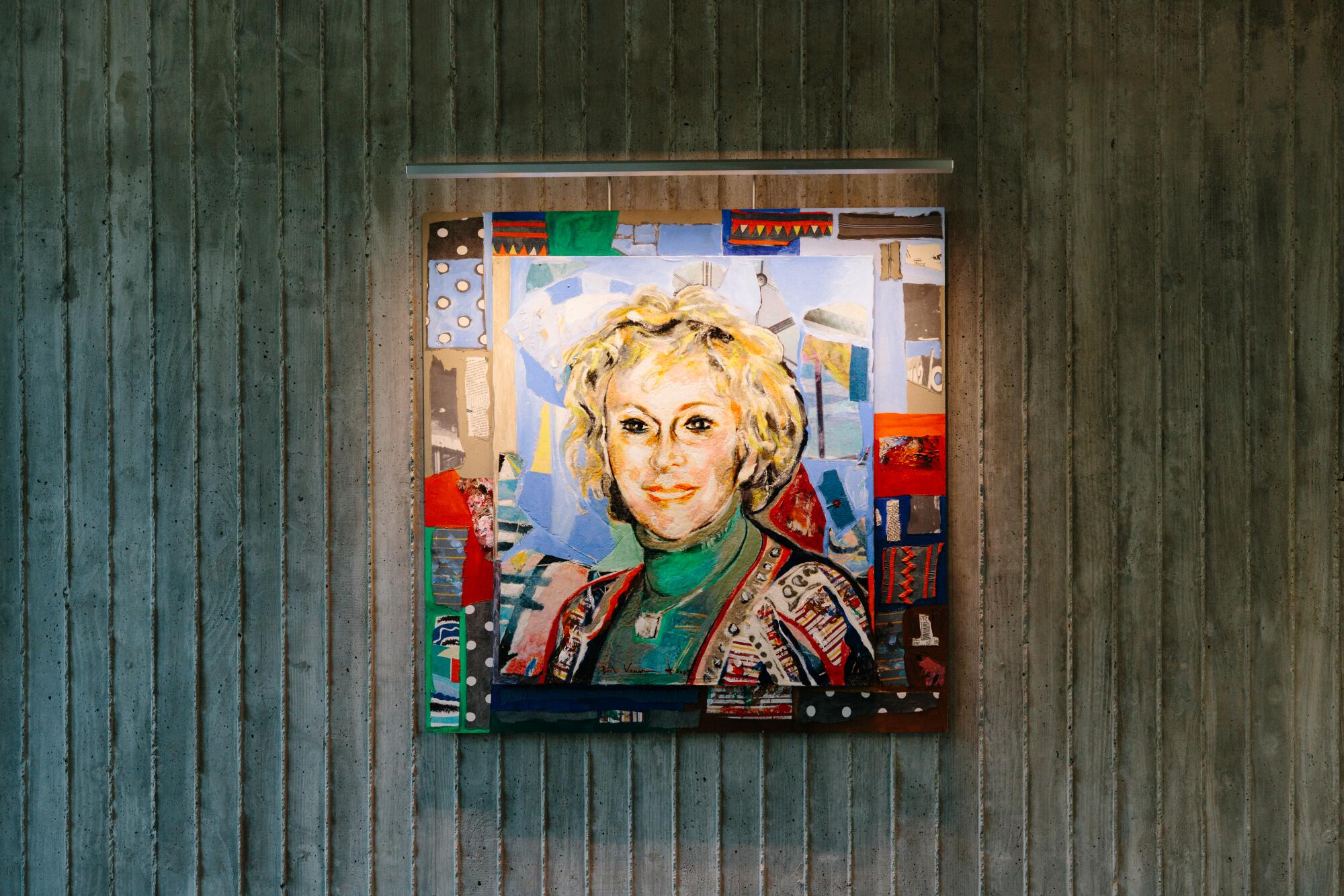
A portrait of the late Glorya Kaufman by artist Boris Vansier hangs inside the center.
“The things that get cut first are the things people need most: self-care, eating right, having opportunities for art and culture, going to the theater — those are stress relievers,” he says. “So the idea is to try and address that here in our own small way.”
Kaufman, who died at 95, was a transformative dance world philanthropist in L.A. She established the USC Glorya Kaufman School of Dance, as well as the Glorya Kaufman Presents Dance at the Music Center. At the Wende, she did more than just fund the new center — it was her idea in the first place. She regularly attended music programs and dance events at the Wende, starting not long after its opening. Back then, museum staffers would move chairs and art around to make space for public events. One day in 2019, Kaufman told Jampol, “This is ridiculous. You can’t have heads poking around a statue; this is super weird,” he recalls. They began hatching plans to create a new space for events.
Kaufman and Jampol felt the COVID pandemic only heightened the need for health and wellness programming. The new building broke ground in 2022, designed by AUX Architecture (which designed the Glorya Kaufman Performing Arts Center at Vista Del Mar Child and Family Services). Other lead donors include the Ahmanson Foundation, the Ralph M. Parsons Foundation and the Rose Hills Foundation. Culver City donated the plot of land. Wellness activities debuted in the nearby sculpture garden even as construction was underway.
Visitors weren’t deterred by the construction cacophony. Event attendance has more than doubled since last year, Jampol says: about 15,000 program attendees in 2024 compared with about 32,000 so far in 2025.
The theater, with its restored slow-growth Douglas fir, is the crown jewel of the new building. It has a retractable seating system so it can morph into a space with room for a dance floor or sound baths. Practitioners can select the type of event they’ll be leading on a digital keypad and the room will automatically reconfigure itself. Hit “screening” and the lights dim in the audience and a screen drops down, for example. Select “dance hall” and disco lights swirl around the room.
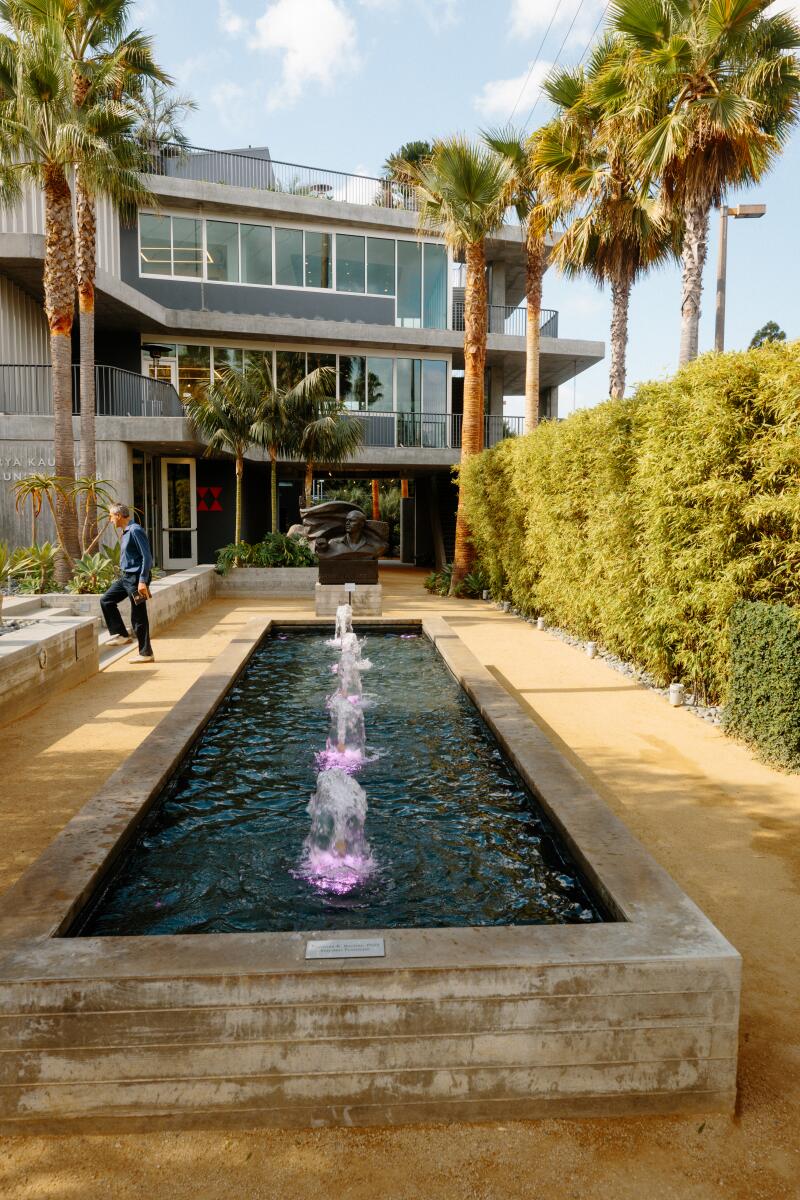
A concrete fountain in the sculpture garden.
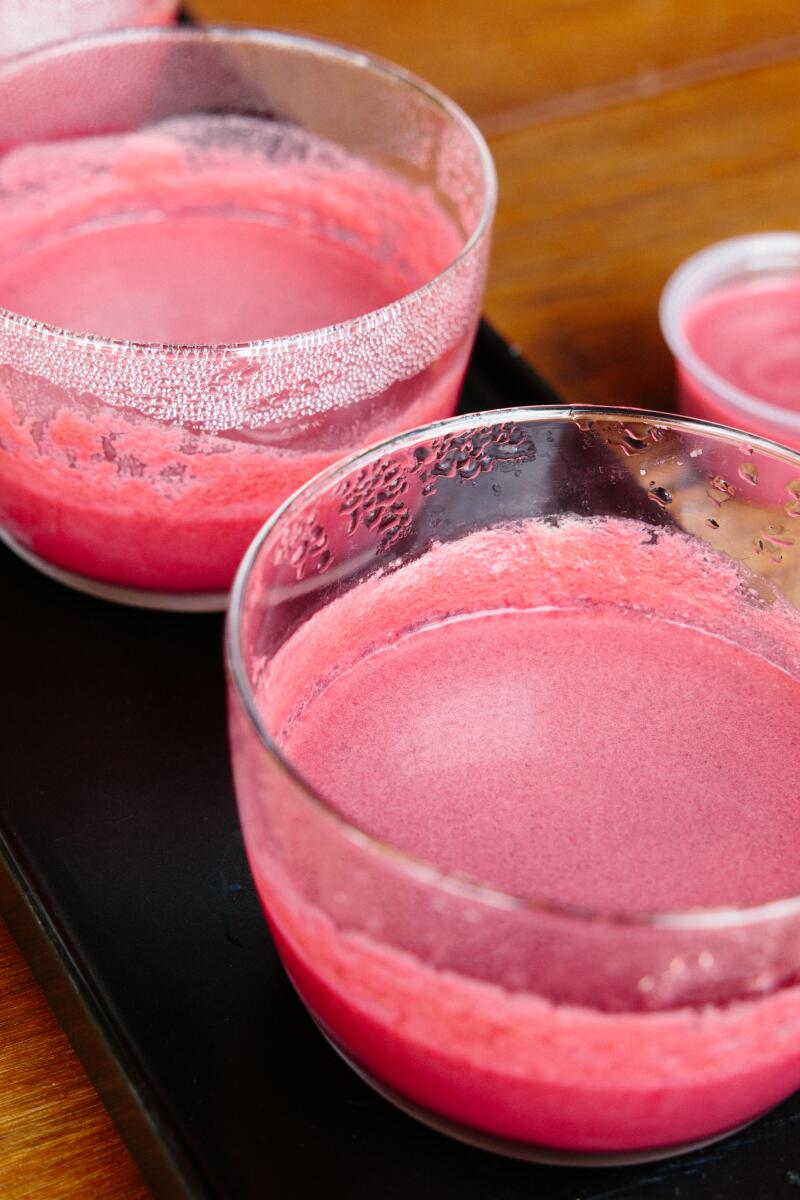
On a recent Wellness Wednesday, free snacks included borscht and bread.
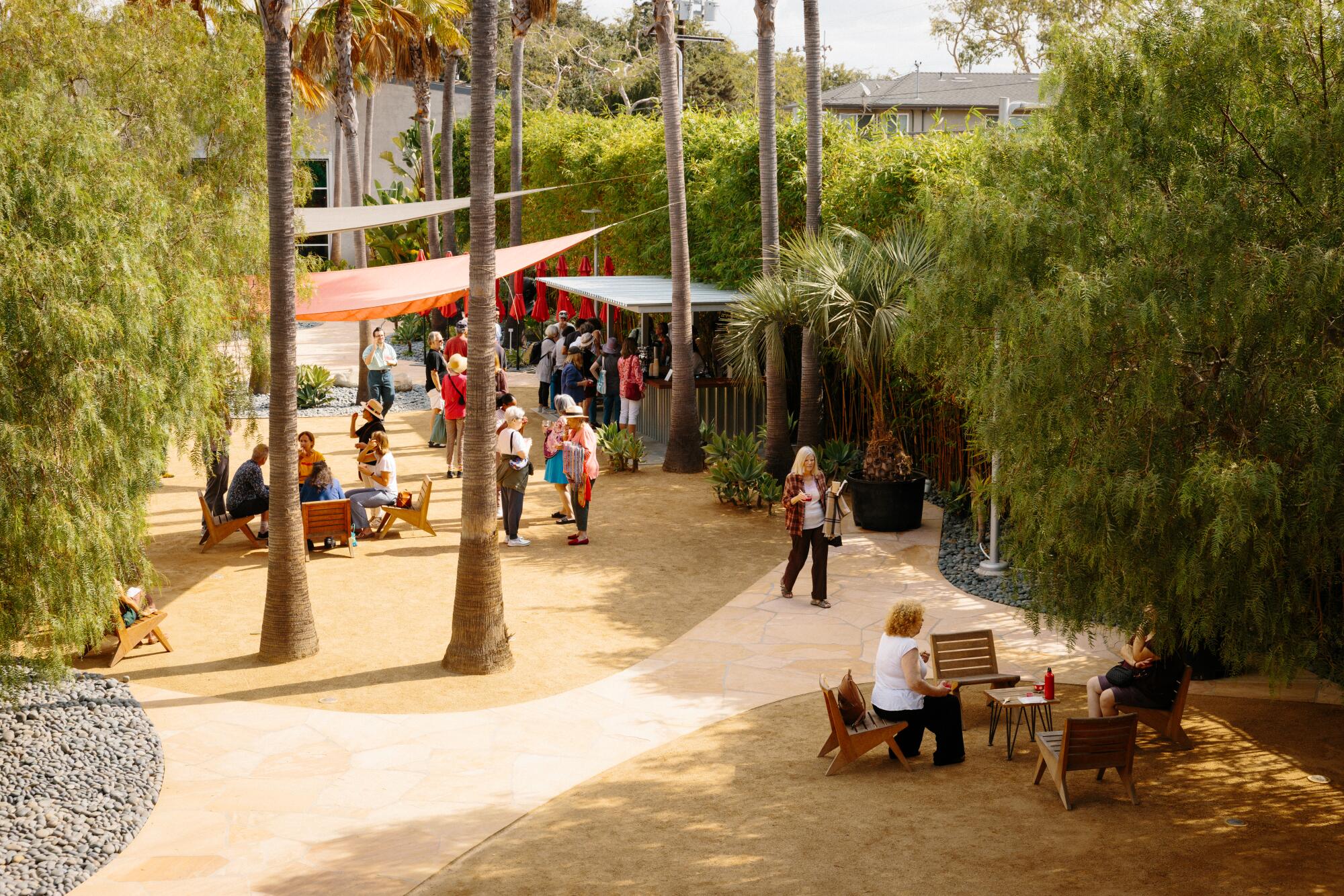
Guests mingle in the Wende’s sculpture garden, a space for community connection.
The Wende’s wellness vision also includes a 4,000-square-foot Zen-inspired mediation garden, created by designer Michael Boyd, a scholar of postwar gardens and Midcentury Modern architecture. It features a decomposed granite ground surface studded with river stones and succulents, and is filled with the sounds of crickets and a rushing stream, digitally piped in. The museum is also turning about 200 feet of a median strip along Culver Boulevard into an “herb and incense garden” that will serve the cafe and upcoming incense-making workshops.
Much of the programming will be internally curated and the museum will pay its practitioners (those events will still be free to the public). Other programming will be “community curated.” Meaning, the Wende will make its center available, for free, to any wellness practitioner in L.A. who wants to hold an event there. The only caveat? Their event must be free to the public.
Kaufman may not be able to attend any of these events, but her presence is deeply felt. A portrait of the late philanthropist, by Russian-born, Swiss artist Boris Vansier, hangs by the entrance to the theater.
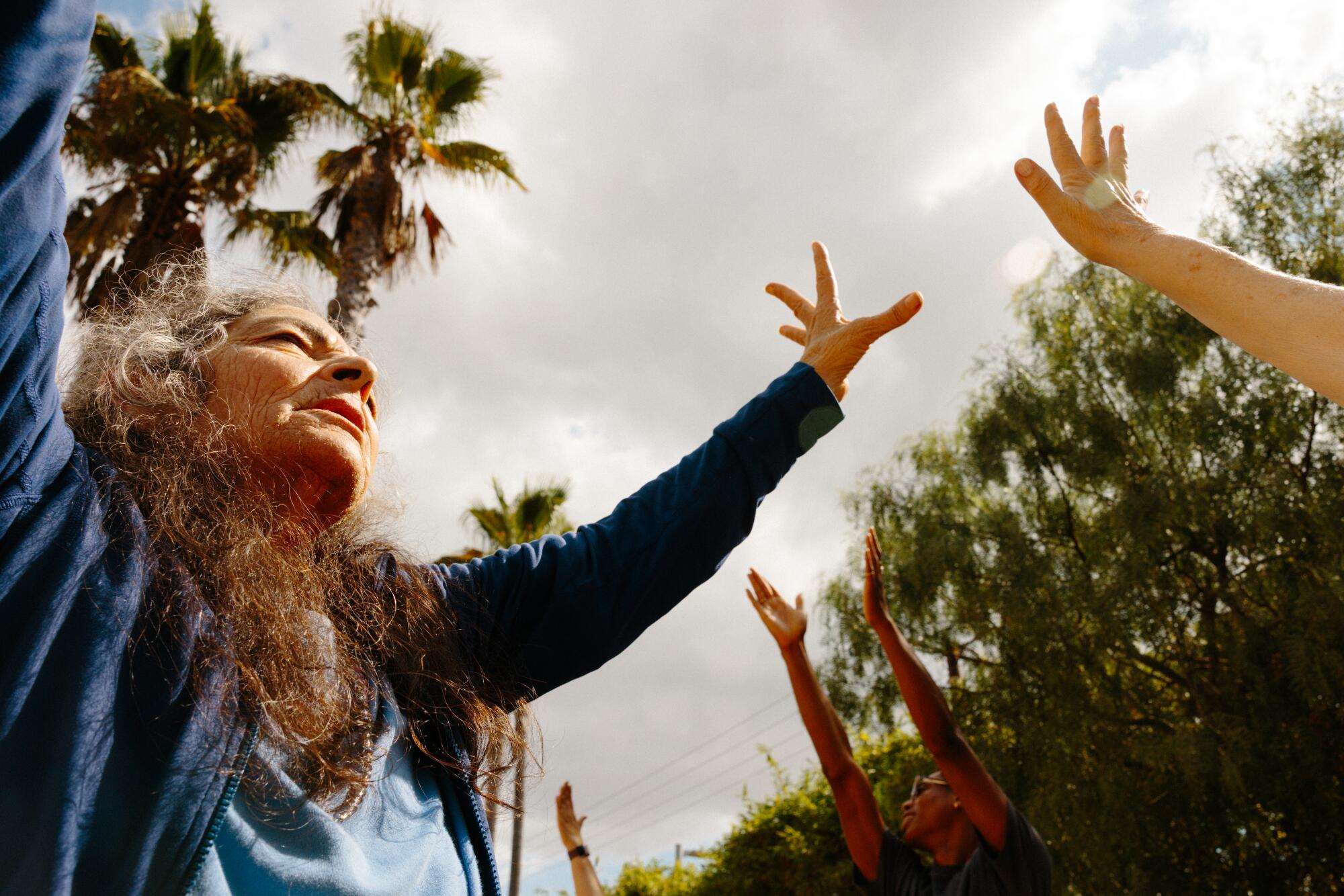
Participants enjoy a movement workshop with Cantilever Collective at the new Glorya Kaufman Community Center.
Surveying the new building, as Wellness Wednesday attendees stream in and out of it, Jampol appears certain of the museum’s mission and role in the city.
“It’s about these moments of joy and happiness and togetherness amidst awfulness,” he says. “Having these kinds of oases in our lives is so important. There’s a certain tranquility in being in beautiful spaces and being present and being in community with one another. In a way, that is the ultimate purpose of museums.”







